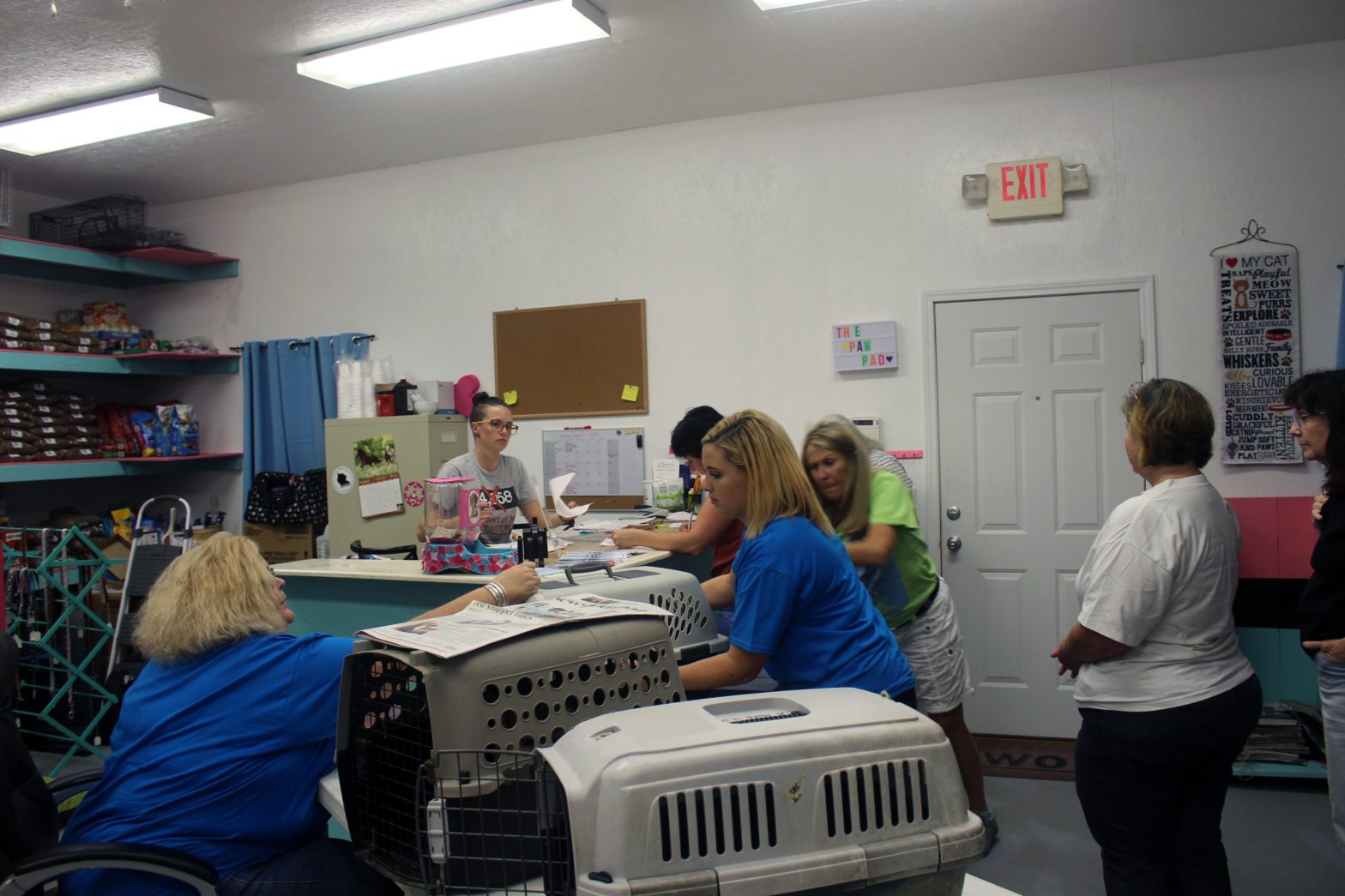![A HOPE volunteers registering cats for spay/neuter surgery. [Ramon Rios | Press Gazette]](http://127.0.0.1/wordpress/wp-content/uploads/2022/01/ghows-DA-73a35f7e-5d9e-6517-e053-0100007f43e9-f6467a9f-scaled.jpeg)
MILTON — A HOPE for Santa Rosa County FL Inc., an animal advocacy organization is taking on the issues of overpopulation of cats in the county. According to research conducted by A HOPE, Santa Rosa County has the highest euthanasia rate — 67 percent — in the state of Florida.
Started by two local women, A HOPE stands for Animal Health Outreach Prevention Education. Brandi Winkleman is president and community relations director and Debra Bankes is the secretary and compliance director.
According to their website, the nonprofit organization exists "to educate our community on responsible pet ownership of companion animals and proper care for community cats through providing low-cost spay/neuter/vaccine services, rescue support and community outreach programs leading to the prevention of unnecessary euthanasia in Santa Rosa County."
During an Aug. 9 presentation to the Santa Rosa County Commission meeting, the all-volunteer force at A HOPE brought solutions:
- Winkleman said they received a $25,000 grant from Florida Animal Friends for spay/neuter surgeries.
- They have arranged for Team Shelter USA, a national full-service animal welfare consulting firm, to perform a $30,000 evaluation of SRC Animal Services, for free.
- They have acquired a van that transported 56 cats Aug. 14 to Panama City for low-cost, $25-per-cat, spay/neuter/vaccine services; the cheapest they could find in our area was $110 per cat Winkleman said.
- In addition, they now have their own building located at 5755 Washington Street in Milton called the Paw Pad.
"We will do anything to keep animals out of shelters," Winkleman said.
During the presentation, Winkleman presented to commissioners national studies indicating euthanasia does not work. All it does is create a funnel effect where the intake of animals is greater than outtake. Most shelters euthanize for space, she said.
Winkleman said the Trap-Neuter-Release program is the solution. TNR allows the trapping of feral, stray and community cats to get them fixed. Once altered, the cats are released to the same area they were collected.
"The cats cannot reproduce," Winkleman said.
Eventually the population decreases. The city of Milton started a TNR program recently but it is too early to tell how well it is working Winkleman said. Under the TNR guidelines, A HOPE can only trap within the Milton City limits.
Winkleman would like commissioners to change the ordinances to allow TNR throughout the county and reduce euthanasia rates; change the shelter hours to allow working people better times for adoptions and increase the cost of surrendering an animal to the shelter to decrease intake.
Commissioner Cole asked the board look into changing shelter hours and increasing surrender costs. However, he recommended more time to study Milton's TNR program before moving forward it.





This article originally appeared on Santa Rosa Press Gazette: A HOPE aims to lower euthanasia rates in the county
